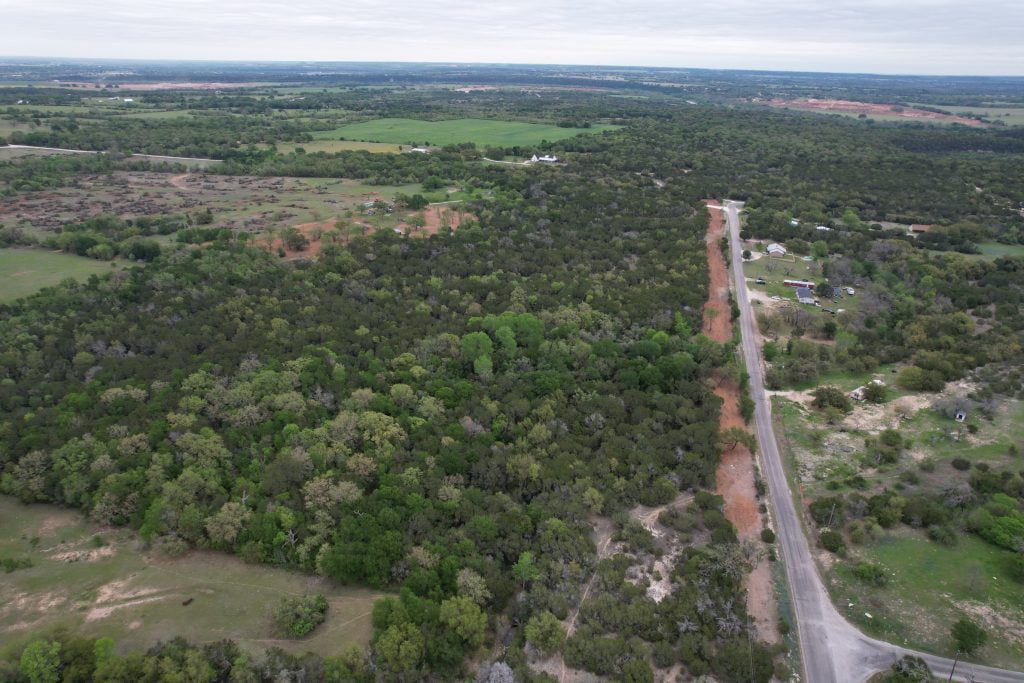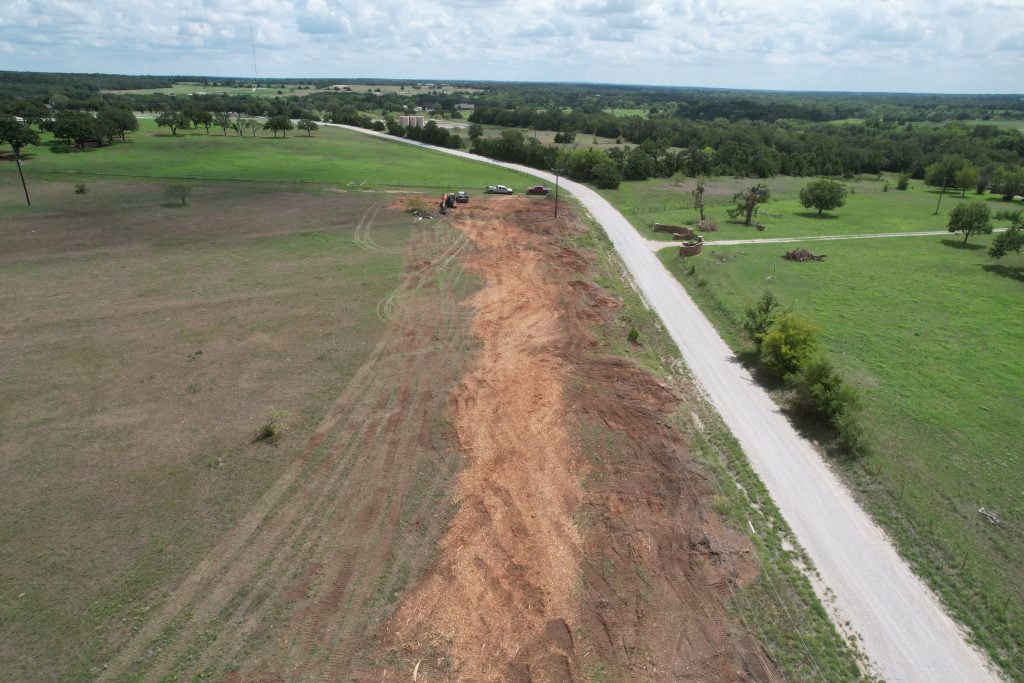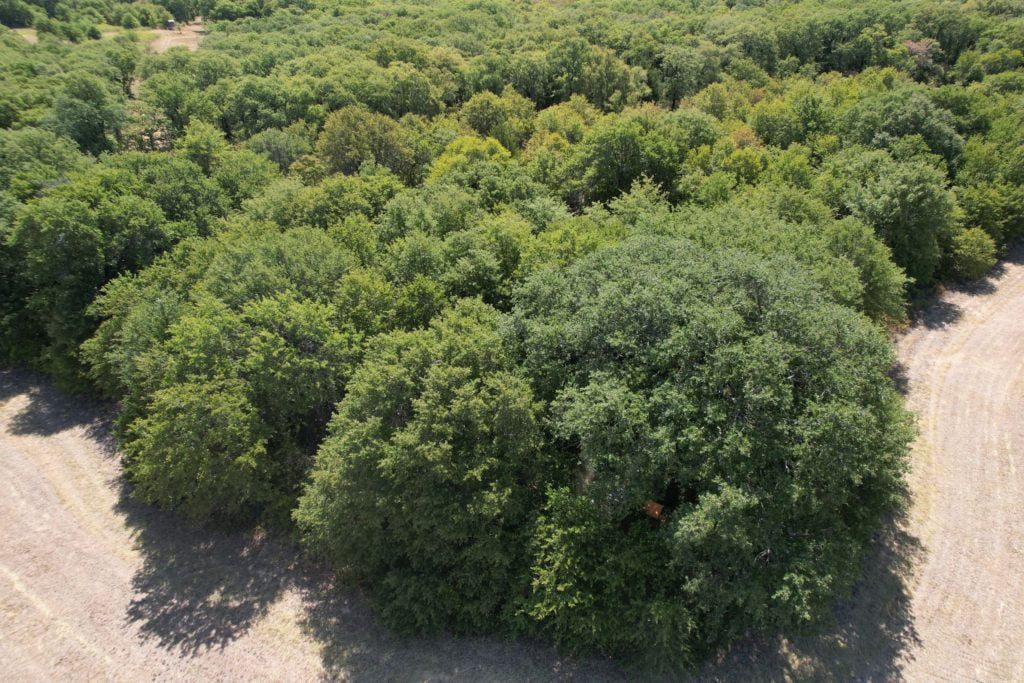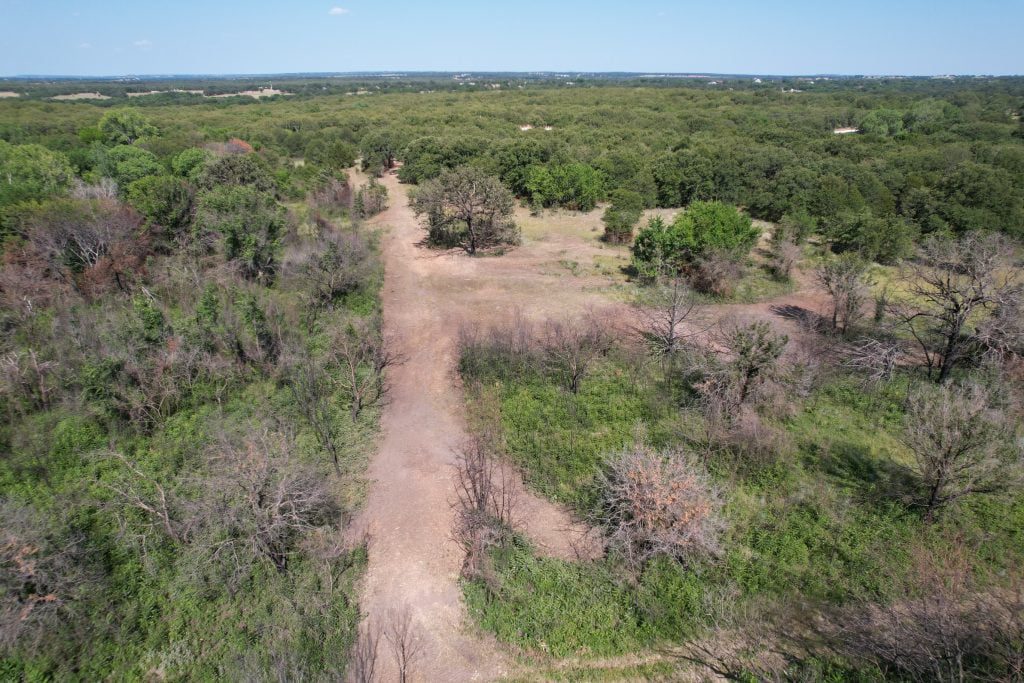Stewart Ranch Services
Bowie, Texas
Austin Road Building in Austin TX
DESIGN YOUR DREAM
PROPERTY
LAND
ACREAGE
DEVELOPMENT SITE
POND
Austin Road Building: The Process and Equipment Necessary for Construction in Texas
Road construction, evolving from humble mud and brick beginnings to the utilization of advanced machinery, represents a dynamic journey through time. The historical significance of roads as connectors of communities is evident. Our examination now shifts to the present, where we delve into the specifics of Austin road building. We analyze the techniques and essential equipment components required for the triumph of projects in locations such as Austin, TX, where materials like stone or mud bricks play a pivotal role. Sustainability considerations further underscore the contemporary approach to construction.
Key Takeaways
Table of Contents
The Evolution of Austin Road Building

Road construction’s historical progression stands as a fundamental aspect of human development, shaping the trajectory of societal advancement. From primitive building materials to the cutting-edge technology of today, the methodologies for constructing roads have experienced significant improvements.
Urban streets and rural pathways have emerged as crucial arteries for commerce, leading to the implementation of new strategies and resources to meet the rising demand for convenience. This analysis delves into the historical continuum, tracing the path from ancient marketplace avenues to the current state of road building in Austin, Texas.
Ancient Roads
The importance of roads in connecting different regions has been evident since ancient times, leading to continuous evolution.
In Mesopotamia, early roads showcased ingenuity by using mud bricks with bitumen, incorporating raised centers for improved drainage and a smoother journey. The dynamics of road construction underwent significant changes during World War II, prioritizing efficient interconnection between urban areas, ranches, and farms through swift transport systems.
This era initiated a transformative phase for rural roads across the nation, emphasizing not only construction but also the maintenance of highways and related features like farm roads and ranch paths. The consideration of proper drainage system designs played a pivotal role in this evolutionary process.
Modern Road Construction
The landscape of road building in Austin, TX has witnessed a significant improvement, fueled by the integration of advanced components and machinery. Contemporary construction techniques encompass a wide array of materials, from soil stabilizers and asphalt to concrete and dry lean concrete. This evolution not only results in reduced costs for road maintenance but also enhances the overall durability of the roads.
Asphalt, a key component, is composed of 95% aggregate and 5% binder. Similarly, concrete, commonly used by the Texas Department of Transportation for highways and major asphalt roads, is a blend of water, sand, cement, and aggregates. The choice between these materials depends on various factors, including the intended purpose of the roadway, traffic volume, and geographical conditions.
Recent advancements have ushered in a new era of rapid progress in road construction, thanks to the use of advanced machinery like excavators, compact track loaders, and dump trucks. These technological innovations contribute to a higher level of precision and efficiency in the construction process.
In addition to excavators and dump trucks, wheel loaders, in conjunction with dump trucks, are frequently utilized. Additionally, advanced paving equipment plays a pivotal role in the construction of farm/ranch roads and urban pathways. It’s worth noting that while Texas has specific requirements, placing a significant emphasis on cost considerations, various regional elements are also taken into account.
Austin Road Building - Essential Steps

The intricacies of road construction demand attention to various essential phases to ensure a successful outcome. From the initial design stages to execution, involving land clearing, earthworks, paving, and quality control, each step is vital for the security and stability of the constructed roads.
Diving into the details, meticulous planning precedes any project, including thorough land-clearing activities such as trench digging, tree removal, and soil grading. Planning also encompasses a detailed cost analysis, scheduling considerations, and logistics management, ensuring the availability of necessary equipment, skilled labor, and dependable subcontractors. Further steps involve the application of robust asphalt coverings, guaranteeing durability with vigilant oversight from stringent quality assurance measures.
In Austin, Texas, and nearby areas, Stewart Ranch Services offers a complimentary quote, marking the initial step toward the successful realization of your construction project.
Planning and Design
Road building in Austin, Texas initiates with meticulous planning, a pivotal phase ensuring overall success. In this process, critical aspects such as existing and anticipated traffic patterns, comprehensive cost-analysis data, design blueprints, and financial requisites are meticulously considered. Notably, the involvement of civil engineers and city planners is indispensable to kickstart a detailed planning process before entrusting the responsibility to the construction entities.
The execution of road engineering projects mandates careful deliberation on various factors, including the establishment of speed limits based on the types of vehicles traversing the roads. Additionally, considerations encompass angle grading, thorough assessments of view obstructions, and the determination of necessary braking distances. These elements collectively aim to uphold safety standards tailored to the local community’s needs, ensuring a seamless driving experience while prioritizing drivers’ comfort.
Land Clearing and Site Preparation
In the context of road building in Austin, Texas, effective land clearing and site preparation are paramount. This initial phase involves the removal of vegetation, trees, and various materials from the land before construction can commence. Grading and excavation play vital roles in creating a level ground surface, essential for proper drainage and preventing issues like potholes in completed roads on farms or ranches.
Land clearing is a crucial step in various construction projects, including buildings and roads. It encompasses tasks such as adding or removing rock, dirt, trees, soil, trenching, ground excavation, embankment construction, and filling placement.
The use of advanced equipment, such as farm machinery, mini-excavators, and compact track loaders, expedites the land-clearing process and ensures precision in height measurements during grading stages. This precision is essential for shaping road locations efficiently.
Additionally, the installation of culverts is imperative to address potential flooding and maintain uninterrupted productivity. These measures contribute to the establishment of high-quality access routes, seamlessly connecting markets to local farmers’ lands.
The integration of advanced tools forms the basis of an effective foundation-laying system for projects in rural areas, enabling safe car travel without encountering disruptions caused by rainwater pools or inadequate underlying structures.
The application of paint on pavement and road markings
The cornerstone of highway safety and efficiency lies in the meticulous application of pavement markings that clearly delineate directions and lanes.
Tips for pavement and road marking:
Road marking regulations:
Adhering to the unique road marking regulations of each country is imperative for those undertaking extensive road marking projects. The ability to paint diverse lines and symbols in accordance with these standards is crucial. Employing a multi-gun, multi-color setup, especially a striper with automatic gun control, simplifies the process of creating accurate broken lines.
Curb Marking:
Addressing curb marking challenges is a common obstacle in pavement marking projects. The 90° angle of curbs necessitates a specialized gun configuration for effective spraying, overcoming this frequent hurdle.
Reflective road marking:
Reflective road marking adds another layer of complexity, requiring a special material with glass microspheres. The application of these microspheres demands specific equipment, such as the Graco Linelazer HP reflective series, featuring a pressurized bead reservoir. This advanced system boasts an adjustable nozzle for precise control over the width of the microsphere dispersion, ensuring heightened accuracy.
Austin Road Building - Farm to Market and Ranch Roads

Farm roads play a unique role in connecting rural areas to urban centers and facilitating the transportation of people and goods. However, constructing these roads is a complex task that requires attention to both safety and durability.
The process begins with a thorough assessment of the terrain to design an optimal route, followed by obtaining the necessary permits from authorities. Land clearing and soil preparation precede actual construction, laying the foundation for a robust road network.
Grading and paving are pivotal stages, with the choice between asphalt and concrete determined by specific project needs. Integrating drainage systems, constructing switchbacks, and erecting walls in hilly terrains are essential elements of the road-building process. Each step contributes significantly to the creation of secure and functional routes that meet local agricultural requirements, including those of ranches.
Regular maintenance inspections are crucial for ongoing functionality, focusing on preserving the road’s optimal condition. Installing signage and features like gutter curbs plays a vital role in water control, particularly during periods of heavy traffic, preventing potential flooding.
Austin Road Building - Sustainable Practices

Road building in Austin, TX involves confronting environmental challenges and placing emphasis on the need for sustainable practices to minimize ecological impact. Choosing materials with a reduced environmental footprint that can decompose in an eco-friendly manner during production is pivotal.
Opting for recycled asphalt and concrete over new materials, along with the design of durable products for extended longevity, is a strategic approach. This not only reduces the volume of materials used but also results in significant cost savings in long-term maintenance. Incorporating these practices into current road construction processes is instrumental for the development of more environmentally conscious alternatives in the future.
Case Study: Successful Road Construction Project in Texas

El Paso’s I-10 reconstruction and expansion project exemplifies a successful approach to the intricacies of road construction, mirroring strategies employed in Austin and San Antonio.
Strategic planning regarding budgeting and timelines was pivotal for the project’s success. The involvement of experienced personnel, committed to ongoing training and strict adherence to safety protocols, played a significant role in achieving the desired outcome. The utilization of cutting-edge machinery was equally instrumental, ensuring precision and expediting the overall completion.
This case study emphasizes the value of incorporating top-tier techniques in roadwork, where the synergy of deliberate planning, skilled labor, and advanced equipment application proves particularly fruitful in the unique context of building highways in Texas.
Summary
Witnessing the evolution of road construction, from ancient civilizations’ mud bricks and stone to the contemporary use of advanced materials and machinery, is truly remarkable. A successful project outcome depends on careful planning and thorough site preparation.
In Austin, road building has gained increased significance in our interconnected world. The emphasis lies in creating roads that are not only safe but also resilient enough to last for generations. This necessitates implementing suitable practices throughout the construction process, including the careful sourcing of materials such as mud or any other necessary supplies.
Frequently Asked Questions
What is the meaning of road building?
Constructing roads involves the utilization of materials like asphalt and concrete, which are derived from mining sites that transport gravel to various plants for processing. These materials are crucial in Austin road-building projects.
How do you build a road?
To build a road, the first step is clearing the land of trees, soil, and ground excavation and then preparing it by grading and sloping. Once the land clearing is completed, layers of sub-bases, binder, and surface course are added.
- Subgrade: we remove all existing grass and topsoil to build a solid road while doing this we fix any grading work needed.
- material types: road base, crushed concrete, screened gravel, asphalt millings.
These materials have proven themselves invaluable in the modern-day process of constructing roads that will stand up over time.
Bring your Austin Road Building project to Stewart Ranch Services and we will take care of everything.
